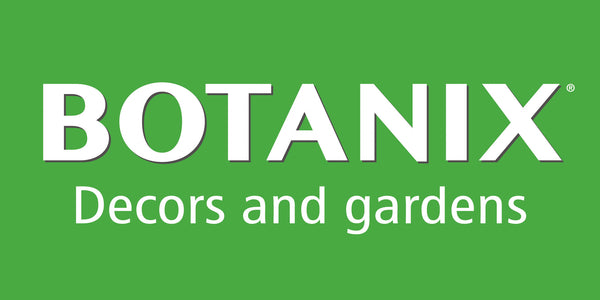
Imagine tomato plants bending under the weight of juicy fruit, a clematis forming a dazzling wall of flowers, and peonies standing proud, even after a downpour. The secret? Proper support! Supporting your plants isn't just about looks; it's a winning strategy for a healthy and productive garden.
Giving your climbing plants, tall perennials, and young trees a structure to grow on maximizes their potential. Let's explore which plants will turn this little boost into a spectacular performance.
Why Should You Support Your Plants?
Before diving into the "who" and "how," let's look at the "why." Proper support:
- Improves air circulation, which reduces the risk of fungal diseases.
- Makes harvesting easier by keeping fruits and vegetables off the ground and within reach.
- Prevents stems from breaking during strong winds or heavy rain.
- Maximizes sun exposure for better photosynthesis and more flavourful fruit.
- Optimizes space by encouraging vertical growth, which is ideal for small gardens.

The Veggie Patch Stars That Need Support
For abundant harvests and flawless vegetables, give these garden standouts a solid structure.
Indeterminate tomatoes: These tireless climbers need strong stakes, trellises, or suspended strings to guide their growth all season long.
Determinate tomatoes: Being more compact, they benefit from a sturdy cage that supports the weight of their fruit, which often ripens all at once.
Climbing beans and peas: Offer them a trellis, netting, or teepee-style stakes right from the start so they can twine around them naturally.
Cucumbers, squash and melons: Encourage vertical growth on a sturdy trellis or net. You'll save space and get cleaner, better-shaped fruit.
Peppers (hot and bell): When plants get heavy with fruit, a simple, discreet cage or stake can prevent branches from breaking.

The Floral Stars That Love to Reach for the Sky
Preserve the beauty of your most majestic flowers by giving them the support they deserve.
Peonies (Paeonia sp.): Install a support ring or grid cage in early spring before the foliage gets too dense. The support will become invisible under the leaves, holding up the heavy flowers.
Clematis (Clematis sp.), sweet peas (Lathyrus odoratus), and morning glories (Ipomoea sp.): These eager climbers will happily cling to a trellis, obelisk, or simple netting.
Delphiniums (Delphinium sp.), foxgloves (Digitalis sp.), and gladioli (Gladiolus sp.): Their elegant, tall flower spikes can snap in the wind. A single, discreet stake planted near the main stem makes all the difference.
Hollyhocks (Alcea rosea) and giant sunflowers (Helianthus annuus): For these garden giants, a tall, strong stake is essential to keep them standing straight and proud.
Climbing roses (Rosa sp.): Guide and tie their long canes onto a pergola, a wall-mounted trellis, or a sturdy obelisk to create a stunning floral display.
Stake, Cage, or Trellis: Each Has Its Role
Every plant has different needs, and luckily, there's a support solution for each one. While the options are numerous, they can be grouped into three main families.
- The Stake: The Guardian of Verticality
This is the simplest support: a single rod (made of bamboo, metal, or wood) that you plant in the ground near the plant. It can be used alone to guide a main stem or assembled in groups to create structures, like the popular teepee stake. It's perfect for discreetly supporting tall flowers like delphiniums and sunflowers. - The Cage: The Protective Fortress
As its name suggests, the cage encircles the plant to offer complete, 360-degree support. Its main advantage is that it supports side branches without needing many ties. It's ideal for bushy plants that get heavy with fruit or flowers, like peonies, peppers, and determinate tomato plants. - The Trellis: The Climber's Ladder
A trellis is a vertical structure designed for plants to cling to. It can take the form of a rigid panel, a simple mesh, a flexible net stretched between two posts, or even a decorative three-dimensional structure like an obelisk. It allows climbing plants to conquer vertical space and becomes the essential growth partner for beans, peas, cucumbers, and clematis.

Ties: The Secret to Damage-Free Support
Attaching a plant to its support is a crucial step. Use soft materials that won't strangle or damage the growing stems.
- Stretchy garden tape: Ideal because it expands as the plant grows.
- Velcro plant ties: Reusable and very easy to adjust.
- Jute or sisal twine: A natural and biodegradable option, perfect for annuals.
- Strips of fabric: Old nylon stockings or strips from a t-shirt are soft and effective upcycling solutions.
Pro Tips for Successful Supporting
- Plan Ahead! The best time to install supports is at planting time or while the plants are still young. Placing a cage over a 20-cm seedling is infinitely easier than doing it on a one-metre plant!
- Install Securely. Make sure your stakes, cages, and trellises are pushed deep enough into the ground to withstand wind and the future weight of the plant.
- Monitor Their Growth. As your plants grow, adjust the ties. Loosen any that become too tight and add new ones to guide new shoots.
By taking a little time to set up supports, you are directly investing in the health, beauty, and productivity of your garden. So, grab your stakes, and get ready to admire the results!




